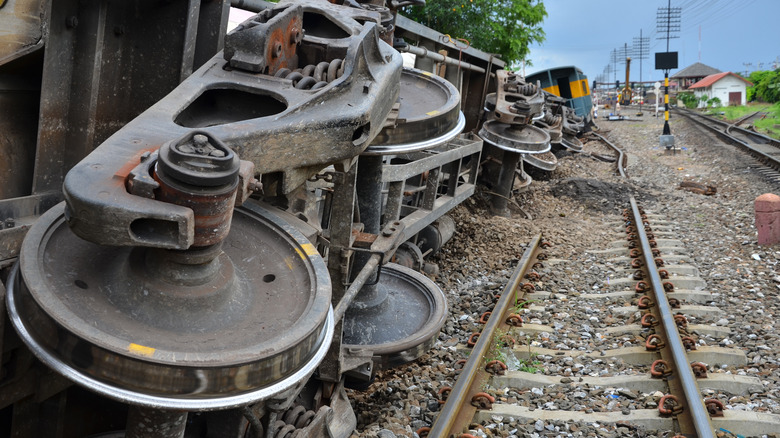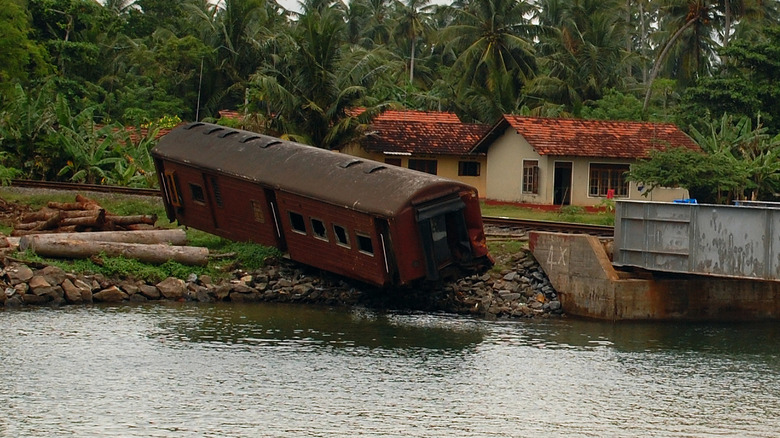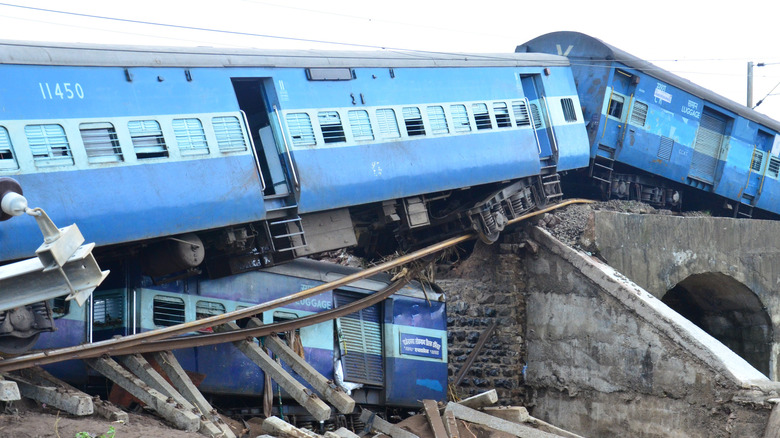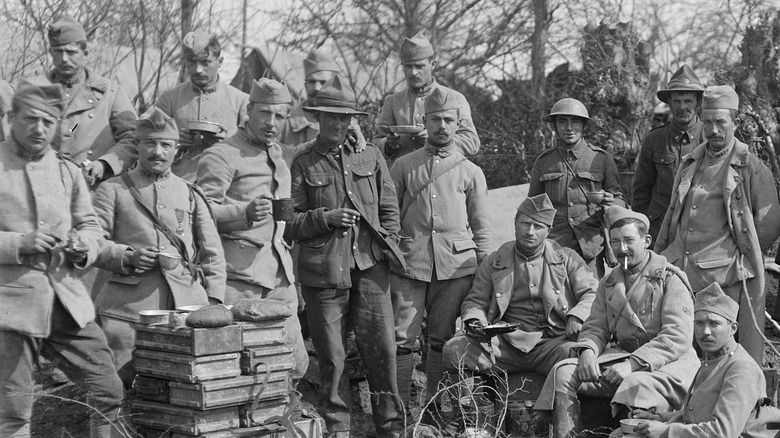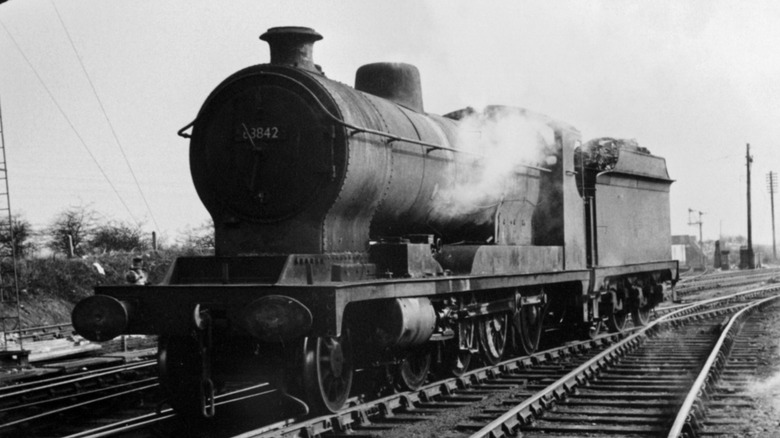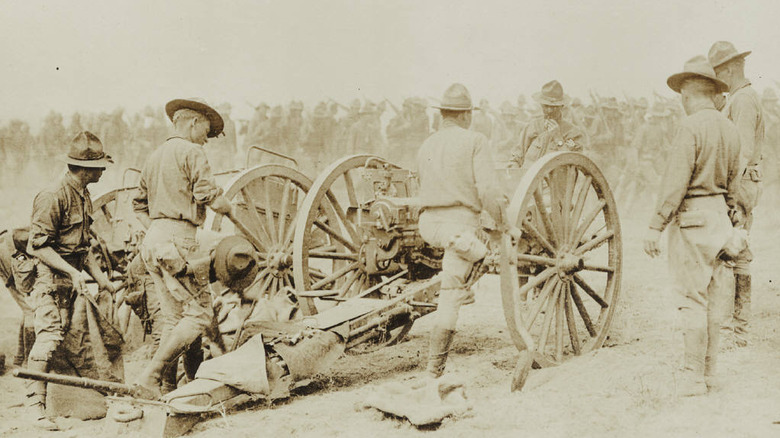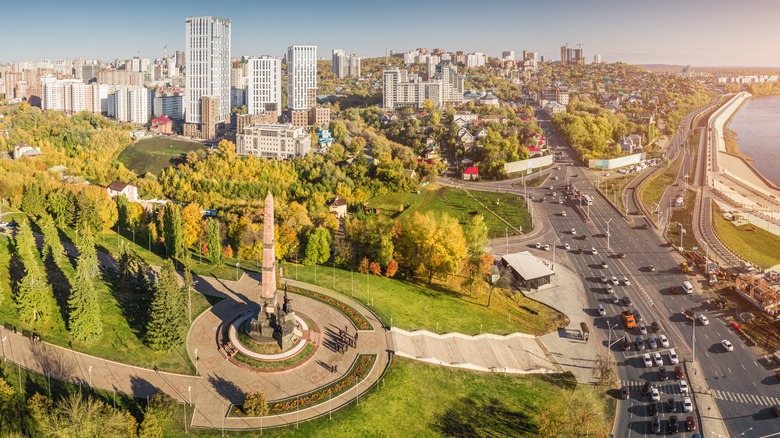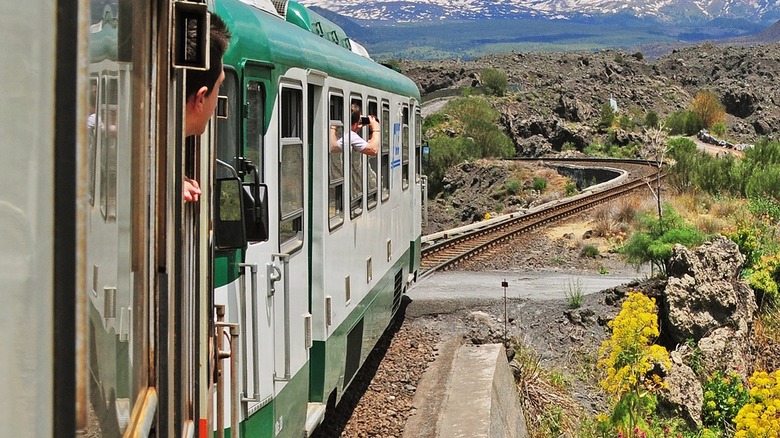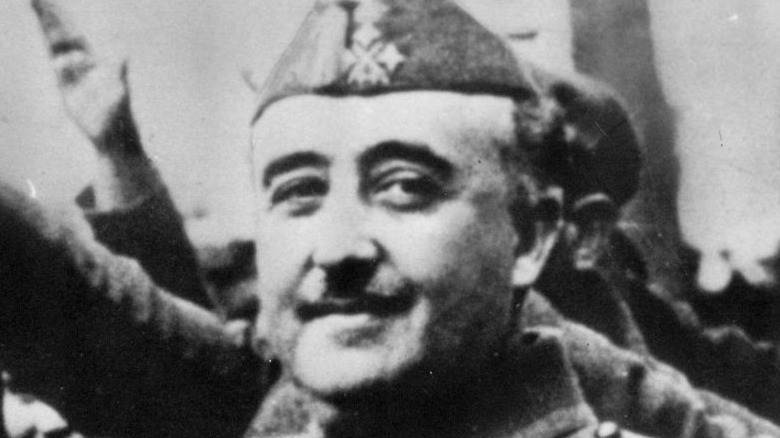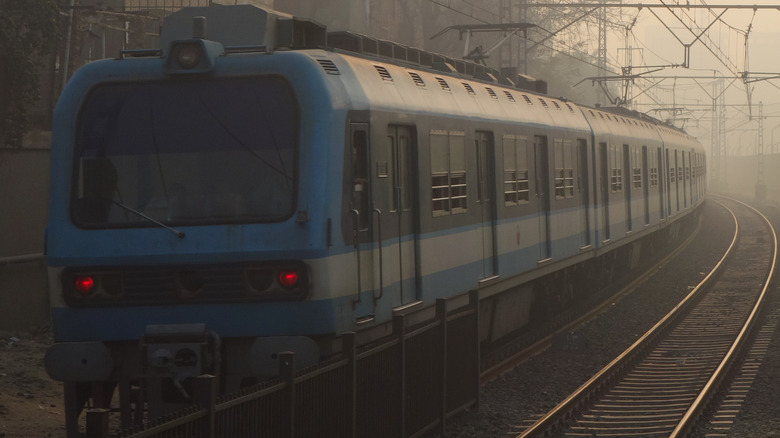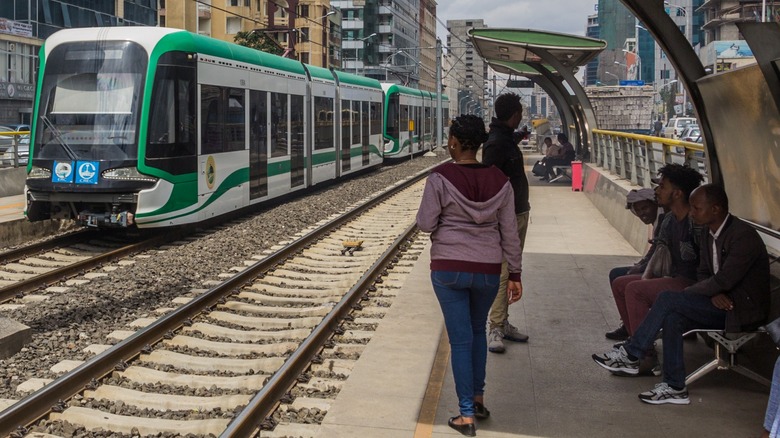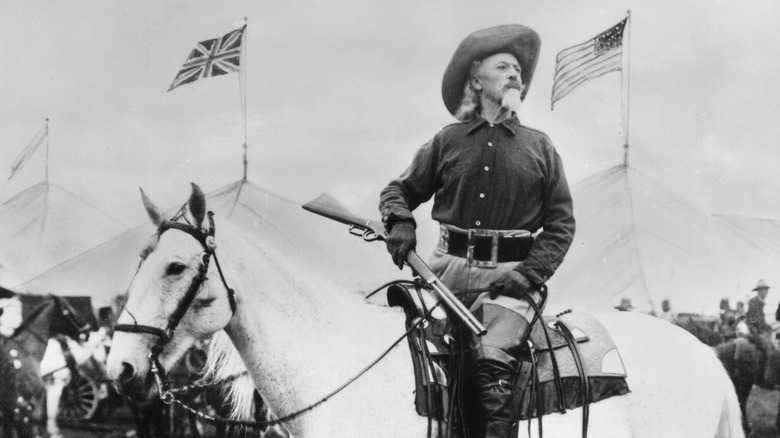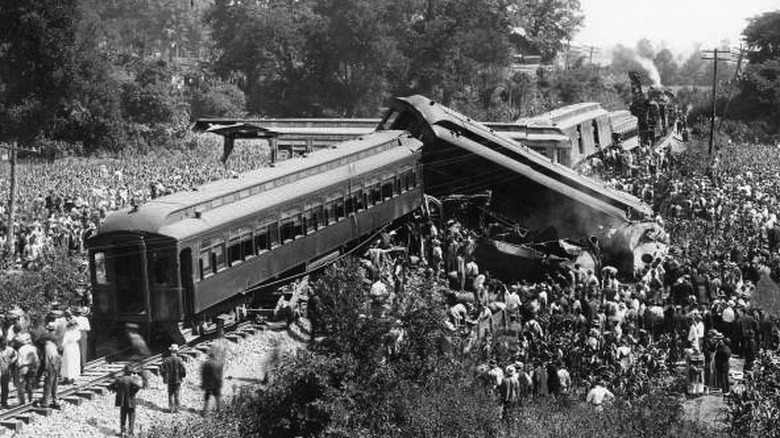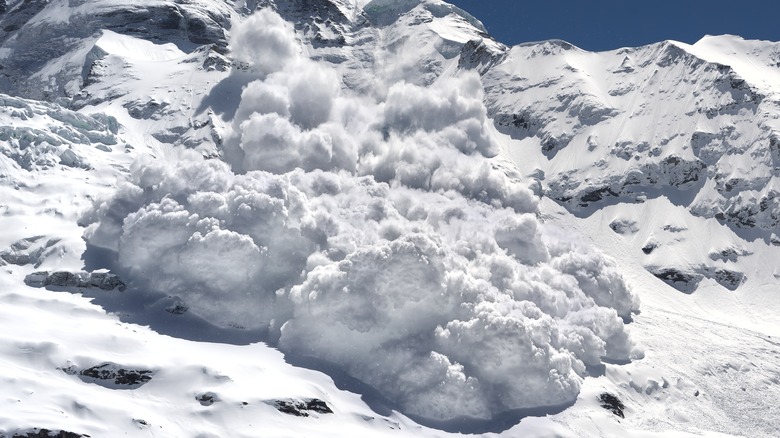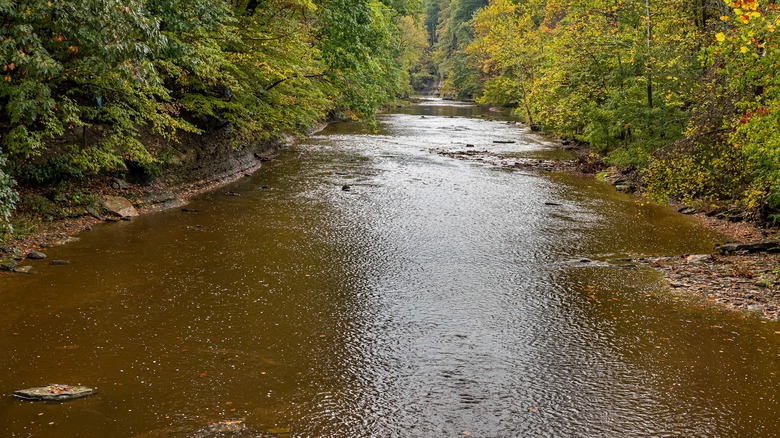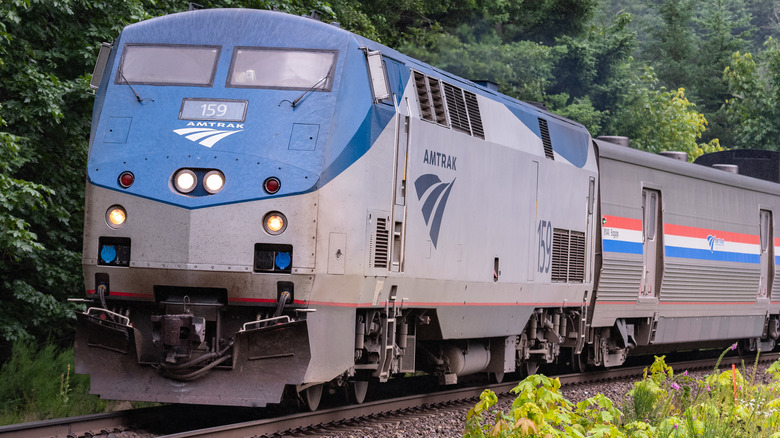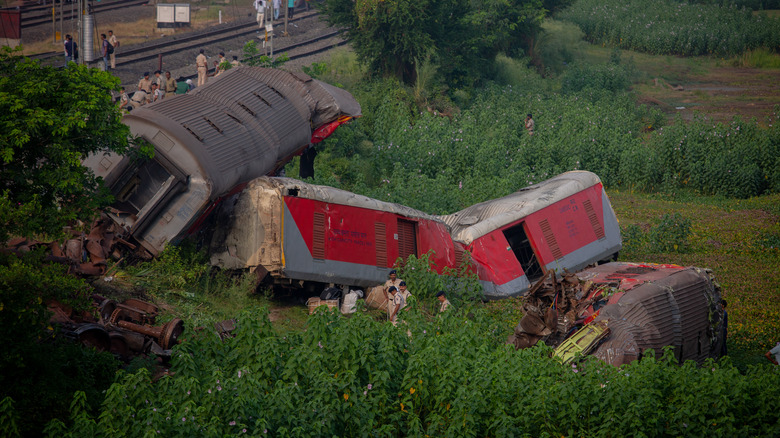The Deadliest Train Accidents In History
According to Federal Railroad Administration data, over the past decade, there have been roughly 2,000 train collisions resulting in around 250 deaths each year in the United States (via Operation Lifesaver: Rail Safety Education). Most of these are between locomotives and passenger vehicles or other obstacles at the intersection of tracks and roads. Fortunately, these numbers reflect a significant decrease in deadly rail incidents since the 1980s, when there were, on average, 7,000 collisions with 600 deaths each year. The reality is that since the invention of rail transport, safety measures to protect human life have continuously been improved, decade after decade, although unfortunately, sometimes only after tragedy strikes and government or market forces required it.
Whether the result of collisions, derailments, acts of nature, or inexperienced engineers, there have been hundreds of tragic accidents involving railway trains over the past two centuries. Many of these resulted in cataclysmic devastation, death, and shocking imagery. These are merely a few of the deadliest train wrecks in human history.
Sri Lanka tsunami train disaster
On December 26, 2004, a 9.1 magnitude earthquake in the Indian Ocean triggered a massive tsunami that would become the deadliest in history, killing 225,000 people across 12 countries, according to Britannica. It also would be the cause of the deadliest railway incident in history when the tsunami pounded the shores of Sri Lanka.
As described by a 2004 report in The Guardian, the train, named Samudradevi ("Queen of the Sea"), was overcrowded with passengers as it headed toward the southern city of Galle, as many were traveling for the holiday weekend. Although the ocean was 200 meters away, the tsunami slammed into the side of the train without warning, derailing it and immediately filling the passenger cars with water. In an interview with Reuters, one survivor who climbed out a window said that most stayed inside the cars because they weren't sure what was happening. Those who remained in the cars had little chance of survival as water deeper than 20 feet engulfed the cars. Others outside of the train were smashed by the train itself or other debris. With as many as 1,700 dead, it indisputably became the deadliest railway incident in history.
In 2008, five of the carriages were restored and put back into use. In 2014, family members of the dead as well as a few survivors took the same train cars on the same path by rail in a memorial for those lost that day (per Reuters).
A train in India plunged off a bridge
On June 6, 1981, what has become known as the Bihar train disaster took place in Bihar, a state in northeast India. According to Britannica, the nine-car passenger train was headed from Mansi toward the city of Saharsa when the train derailed while passing over a bridge. Seven of the carriages fell into the fast and deadly waters of the Baghmati River. The derailment has been blamed on everything from the engineer applying the brakes too fast when he spotted a cow on the tracks, to slippery conditions caused by monsoon rains, to even potentially a cyclone. According to History, the seven passenger cars sank immediately, and any rescue attempts would be hours away. Meanwhile, according to India Today, the engineer fled the scene.
The United News of India initially reported a death toll of 215 (via The New York Times). After a "massive operation" by divers recovering bodies, the government in a press statement increased the official death toll to 232 (with 88 rescued alive) and disputed reports that a Navy admiral had said there could still be 500 unrecovered bodies. Despite the government's claims, some have argued the death toll could have been as high as 800 people (per CBS News). According to The New York Times, some Indian officials stated that there could have been anywhere from 1,000 to 3,000 passengers on board, and many of the bodies were washed away in the monsoon floods. The best estimate, according to India Today, is that between 800 and 2,000 people perished, but the death toll will likely remain unknown.
The deadliest train wreck in France's history
It was December 12, 1917, and the tides of World War I had shifted toward the Allied powers. With the Christmas holiday approaching, more than 1,000 French soldiers were given a break from where they were stationed in Italy in order to return home to their families, so they boarded a train that was to take them to Lyon, France (per Britannica). The problem? They would be traveling through the Alps, and the engineer warned officials that the ratio of one locomotive for nineteen passenger cars would make it very difficult to brake downhill. According to the book "World Disasters: Tragedies in the Modern Age," the single locomotive was pulling three times its approved weight, but the engineer was threatened with a court-martial if he did not continue.
Needless to say, he was correct. Despite trying to keep the train at 6 miles per hour, the train sped up and lost control at the bottom of the hill before derailing and catching fire. According to Britannica, the cars were constructed mostly of wood, so they burned fast. At least 500 passengers died, with a United International Press report pegging the number at 543. The engineer was court-martialed anyway, but was found not guilty of negligence.
A mostly forgotten Romanian rail disaster
France was not the only country to experience a deadly train disaster during World War I. In August 1916, Romania officially joined the war on the side of the Allies (per Britannica). That December, the German military advanced on the Romanian city of Bucharest for occupation after numerous raids by air, sending the Romanian military and many civilians scrambling. The train that was leaving for the city of Iasi was extremely overcrowded with people attempting to escape the German onslaught. According to historian Dorin Stanescu (via Radio Romania International), the train, which had a seating capacity of 1,000, may have had as many as 5,000 people on board, including people on the passenger car roofs.
Long story short: The train couldn't slow down when it needed to apply its brakes, and, while avoiding a few other disasters as those driving tried to maneuver a way to stop, it eventually slammed into a fuel tanker, which exploded (per Romanian news outlet EVZ.ro). Some estimates say as many as 1,000 people died, but despite the catastrophic death toll, there has not been much research on the incident beyond the work of a few Romanian historians.
A wreck in Guadalajara, Mexico, during the Mexican Revolution
The year was 1915. The Mexican Revolution had been waging for nearly five years as competing revolutionaries battled to overthrow the country's dictatorship. After revolutionary leader Venustiano Carranza captured the city of Guadalajara on the western coast of Mexico, he ordered that the families of his soldiers be brought there by train, perhaps to increase the morale of his troops. Like many of the train disasters discussed so far, the train ended up being packed well beyond capacity with people in, on top of, and even below the train.
According to a report by the San Jose Mercury-News in 1915, the engineer lost control while going down a steep decline, and people began to fall off the top of the train. Soon, the train catapulted off the tracks and into a deep canyon, where 600 of the 900 passengers were killed instantly and a mere six survived without any sort of injury. The report noted that upon hearing about the deaths of their families, some of Carranza's soldiers died by suicide while others demanded revenge — although none of the operators of the train remained alive to seek vengeance against. Ken and Katie Lytle included this in their book "The Little Book of Big F*#k Ups," describing Carranza's "death train" as a "nice gesture" screwed up by bad math.
An explosion strikes two trains in Russia
On June 4, 1989, one of the deadliest railway accidents in the history of the Soviet Union took place near the city of Ufa in the midst of the Ural Mountains. As described by The Moscow Times, it involved two passenger trains full of civilians, including many children who were on their way to and from summer camp. Unknown to the engineers of two trains approaching the area from opposite directions, a gas pipeline near the tracks had leaked, and a cloud of flammable gas was floating along the railroad tracks. When the two trains passed one another, their wheel sparks ignited the cloud, and a gigantic explosion equivalent to about 10,000 tons of TNT blew into both trains, completely obliterating many of the passenger cars (per the BBC).
A total of 575 people died and another 800 were injured, according to The Moscow Times. A team of Soviet and American doctors worked together in Ufa to save the lives of those who suffered severe thermal burns (per National Library of Medicine). According to the BBC, despite how catastrophic the disaster was, this story is mostly forgotten today, even by those who had been in top leadership positions in Russia at the time. News coverage in the Soviet Union in June 1989 was focused primarily on the Tiananmen Square protests unfolding in China, not to mention the simple fact that the Soviet Union's media was still heavily censored and focused on more positive news domestically.
500 passengers suffocate on Italian train
This story is particularly haunting due to the way the passengers died: asphyxiation. It was March 1, 1944, and World War II was raging. According to History, the exact details remain somewhat mysterious, but what is known is that a freight train was carrying around 650 passengers when it stopped just inside a steep and narrow tunnel pass. Some speculate that it simply couldn't carry the freight load, while others have pondered whether there was a train coming down the slope in the opposite direction. Regardless of the reason, it was during these 30 minutes that tragedy struck. As described by Time, when people came to the rescue, the engine was still running and more than 530 of the passengers had suffocated.
Due to the war, the locomotives had been using poor-quality coal substitutes that had poisoned the passengers with deadly carbon monoxide that they could not smell (per History). As explained by the Centers for Disease Control and Prevention, passengers likely would have experienced symptoms such as headaches, dizziness, weakness, vomiting, and confusion before losing consciousness and dying. At the time, this tragedy didn't receive any press attention, as there were fears of crushing the morale of the Italian people. It didn't become widely reported in Italy until 1951 when families began suing for damages, according to Time.
A three-way train crash in Spain
As mentioned in The Guardian, one of the deadliest train crashes in European history took place in 1944 when hundreds of people were killed near the Spanish village of Torre del Bierzo. According to Reuters, the crash took place when three trains collided inside of a tunnel. While the government announced that fewer than 100 people had died, the actual death toll was likely somewhere in the 500 range (with some estimates as high as 800). Like many rail disasters, it was the result of a train going too fast down a steep incline. A runaway mail train plowed into another train inside a tunnel, and before the wreckage could be cleared, a coal freighter train slammed into it from the other side, per the book "The Iron Road: The Illustrated History of Railway." Author Christian Wolmar describes how censorship by the regime of General Francisco Franco meant the crash was not discussed in-depth in Spanish newspapers at the time — part of why it remains a mostly forgotten story today.
Hundreds die in an Egyptian train fire
While train safety has come a long way in recent decades, tragic accidents still occur. It was February of 2002, and the important Muslim holiday of Eid al-Adha meant that many in Egypt were traveling. As described by The Guardian at the time, the overcrowded train caught fire, but there was no way for passengers to alert the engineer. As the fire ripped through the passenger cars, people had to make the choice to either burn alive or jump from the train, which was traveling as fast as 70 miles per hour. Eventually, the engineer heard the screams and stopped the train — but not before 370 passengers had been fatally injured.
According to a survivor who spoke with The New York Times, there had been "flesh and blood" everywhere as the raging fire, which had probably started in a stove and spread quickly through seven passenger cars, burned people alive, including many children who were accompanying their families on holiday trips. The passenger cars had been so crammed with travelers that even as the fire spread, people couldn't move to get to the doors, and mostly burned alive and died together in giant mobs (per Los Angeles Times). "I saw so many people dying before my eyes," one survivor told The New York Times. He recalled holding on to the side of the train for as long as he could, finally letting go when he could stand the heat no longer. He woke up the next day in a hospital bed with a broken shoulder ... one of the lucky ones who survived.
A train in Ethiopia derails on a bridge
In 1985, the worst-ever railroad tragedy to happen on the entire continent of Africa took place. The country was Ethiopia and, according to the United Press International, a passenger train was heading from Dire Dawa to Addis Ababa when it crossed over a 40-foot-high bridge and derailed. This sent the passenger cars plummeting into the ravine below. The five-car train was carrying about 1,000 people at the time (per The New York Times).
Initial reports had the death toll at 392 with an additional 370 injured, but an Associated Press report would later increase the numbers to 418 and 559 respectively. The New York Times reported at the time that the train had been traveling too fast and that the engineer, who was later arrested, had failed to slow the train as it approached a curve. The transport minister of Ethiopia was put in charge of the investigation, and it was ultimately decided that, indeed, the driver had not slowed for a curve, and that the deadly accident had been preventable (per Ottawa Citizen).
The Malbone Street Wreck of New York City
While none of the train disasters in the United States have reached the tragic levels of those in some other nations, there have still been numerous railway accidents of note. One of the deadliest was the Malbone Street wreck of New York City. It was November 1, 1918, and the driver of the train, containing 650 passengers headed out of Manhattan, was only 23 years old, with very little experience. As recounted by Smithsonian Magazine, he took a curve that was too sharp too fast and slammed the sides of the train cars into the walls of a tunnel, shattering the passenger cars so that wood, glass, and metal fragments flew at the riders like shrapnel from an explosion. Some reports described people getting impaled and even decapitated. The train was supposed to have entered the tunnel at 6 miles per hour, but witnesses clocked the speed of at least 30 mph (per PBS). Some who survived were then electrocuted by the third rail while trying to escape the carnage. Nearly 100 passengers died, many horrifically, although the young and inexperienced driver survived.
According to the New York Times, there was some silver lining to the tragedy. Improved safety features such as timed signals and automatic braking would soon be added to New York City's trains. The name of Malbone Street was also changed and today stands as Empire Boulevard (per PBS).
Buffalo Bill's Wild West show train collision
While technically not among the deadliest for humans, the uniqueness of this train wreck makes it worth mentioning. Since the 1880s, "Buffalo Bill" Cody had been entertaining audiences with his Wild West show. In 1893, an estimated three million people watched his show, according to Britannica. The tragedy came later in his career, in 1901. His show was massive, involving thousands of people and animals moving from place to place by train. According to the Buffalo Bill Center of the West, the show needed an astonishing 50 rail cars by the mid-1890s.
During the morning of October 29, 1901, though, a freight train engineer misunderstood a telegraph message and didn't realize that Cody's trains were still on the track (per NC Department of Natural and Cultural Resources). This led to a head-on collision with Cody's train, destroying both trains and killing more than 100 of the show's horses, including Cody's personal "star" horse. A New York Times report stated that only two horses survived and that Cody was heartbroken. If that wasn't bad enough, one of his stars, Annie Oakley, was partially paralyzed in the collision (per Ohio History Central). Oakley recovered and the show would go on, but the 1901 disaster wouldn't be its last rail accident: A train wreck in 1911 injured several staff members, though it was not nearly as severe (per The Evening News).
The Dutchman's Curve train tragedy
For a safely functioning railway system, communication is key. Railroad tracks can only be traveled one way at a time, so if there is a timing or miscommunication issue, the results can be deadly. That's exactly what happened during the early morning hours of July 9, 1918, in Tennessee, when two passenger trains ended up on the same tracks heading in the opposite direction. According to The Tennessean, the head-on collision took place on what is known as Dutchman's Curve in the city of Nashville. More than 100 people were killed, including most of the train's crew as well as numerous Black munitions plant workers who were in a segregated passenger car near the locomotive. Thousands descended upon the catastrophic scene, either out of curiosity or desperately looking for loved ones.
The original reporting blamed the collision on human error, and experts at the time believed both trains to be traveling over 60 miles per hour. "Everywhere there was blood and suffering and chaos," one newspaper reported grimly. Before doctors and nurses could make it to the scene, a group of Good Samaritans did their best to save as many of the injured as possible. By the end of the day, the city hospital was overwhelmed, with every bed and cot filled. Today, a plaque memorializes the dead, and according to Nashville's WKRN News, fragments of the crash can still be found at the location, over a century later.
Two trains caught in an avalanche
As the tsunami incident of 2004 proved, not all train disasters are caused by human error. In 1910, an act of nature set the stage for one of the deadliest train accidents in United States history. It was a routine trip from Spokane to Seattle, Washington, when a mammoth blizzard hit. The snow-clearing crews couldn't keep up, according to The Seattle Times. Eventually, two trains — the Spokane Express passenger train and an express mail train — had to stop. The trains were essentially stuck on the tracks near a small village for nearly a week as frightening weather conditions and small avalanches surrounded them. Some passengers without children chose to make the dangerous escape by foot to the nearby village. (All of these would ultimately survive.) As the weather warmed slightly, snow turned to rain and thunderstorms, which, in the middle of the night, as everyone aboard the Spokane Express was sleeping, triggered the deadliest avalanche in U.S. history. As described by History, the terrifying roar of the avalanche could be heard before it swept both trains down into a 150-foot-deep gorge, covering them in as much as 70 feet of snow.
Rescue crews had to make their way through the snow to get there, and they spent weeks digging out survivors and bodies (per Library of Congress). Bodies of the dead were wrapped in blankets and had to be taken out by sled (per the Museum of History and Industry). The final body wasn't even discovered until four months later. All in all, 96 people perished from the two trains (per The Seattle Times).
A bridge collapses into an Ohio river
In 1865 in Ashtabula, Ohio — a small village halfway between Cleveland, Ohio, and Erie, Pennsylvania — a bridge was constructed over a gorge that contained the shallow Ashtabula River. As described in "The Ashtabula Disaster" by Stephen D. Peet, there were disagreements over the erection of the bridge between the engineer and designer, but the disputes were ended with an uncharacteristically long truss-style bridge that was built at a "dizzy" height. It would last barely over a decade.
On December 29, 1876, a train with an estimated 160 passengers was heading west with two engines in order to push through the winter snow when it crossed the fateful bridge (per cleveland.com). Without any warning, the bridge collapsed, plunging the train 70 feet below into the gorge. The train then caught fire, killing many of those who survived the initial impact (per Ohio History Central). Original reporting added that some who were trapped in the passenger cars likely drowned or froze to death. All in all, as many as 97 people died, while dozens more were injured. According to OhioHistory.org, the state legislature appointed a committee to investigate the cause of the collapse. In an 1879 book on railroad accidents, the author concluded that the weaknesses of the bridge were known but disregarded, and it was surprising that it stood as long as it did. In 1883, the designer of the bridge, Amasa Stone, died by suicide.
Amtrak train derails on bridge over bayou
The reality is that travel by train has never been safer than it is today, including in the United States. With that said, that doesn't mean there haven't been modern deadly disasters. The deadliest disaster ever for Amtrak, for instance, took place on September 22, 1993. As described by History, a Miami-bound train with more than 200 people aboard was passing near Mobile, Alabama, when, unknown to the Amtrak engineers, a negligent towboat had clipped the railroad's bridge. The collision bent the tracks out of alignment by 3 feet. The train, traveling at 70 miles per hour, began crossing the bridge. When it hit the bent tracks, it derailed and plummeted into the bayou below. The tugboat was able to rescue seven people from the water, but ultimately, 47 people would perish that night (per The New York Times).
Five years later, the pilot of the tugboat, who lost his license but didn't face criminal charges, was still haunted by that night and his role in the crash (per The Seattle Times). In 2018, one survivor, who had been only 11 years old and lost both of her parents in the accident, said she thought about it often. "I smell the oil. I see the fire. I hear the screaming," she told Alabama news organization AL.com.
Two trains derailed in the Indian state of Odisha
India is the world's most populous nation as well as one of the most train-reliant. In 2023, Prime Minister Narendra Modi publicly talked up the urgent need to update the national railway system, built in the British colonial era (pre-1940s) and so stressed that accidents are a regular occurrence. On June 2, 2023, India experienced one of its most profoundly tragic train accidents in history — a double derailment in the eastern state of Odisha.
According to initial media reports, somewhere between 10 and 12 coaches of one large passenger train derailed, likely due to an electronic signal failure. That sent wreckage onto an adjacent track. Another passenger train came through on that track and collided with the debris, leading to the derailment of as many as three of its cars. Hundreds of people became trapped under mountains of broken glass and metal. Locals from a nearby village rushed to help as authorities arrived. A team of 1,200 volunteers, 115 ambulances, 45 mobile medical vehicles, and personnel and resources from the Indian army and air force contributed to the efforts, with workers primarily using cutting torches to pry open doors to extract survivors. By 10 p.m., mere hours after the accidents, efforts shifted from rescue to recovery as personnel sifted through the debris to find the bodies of the deceased. Within four days, the death toll had reached 278 with an injured count of around 1,100.
